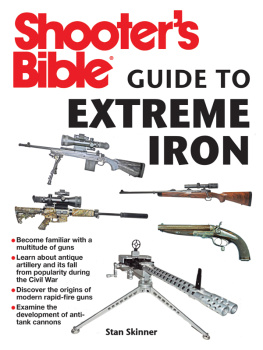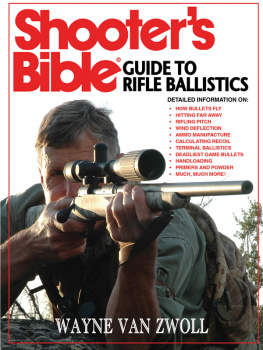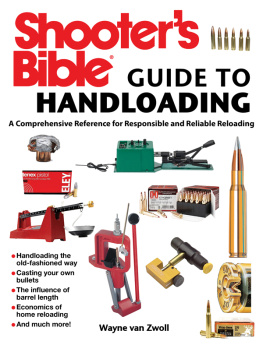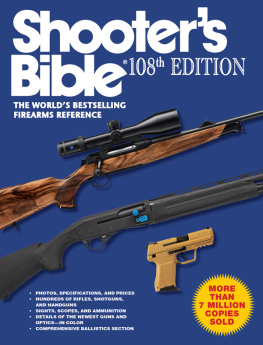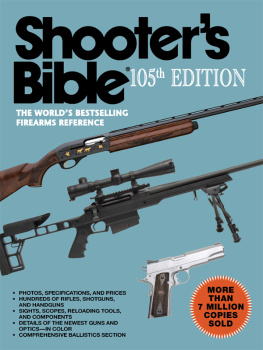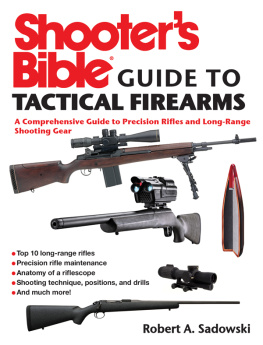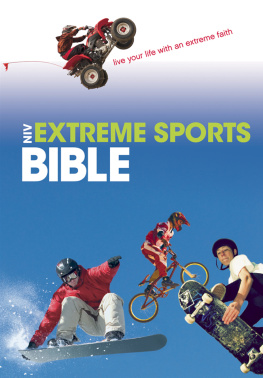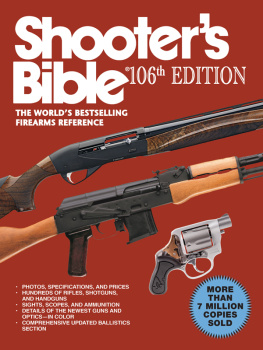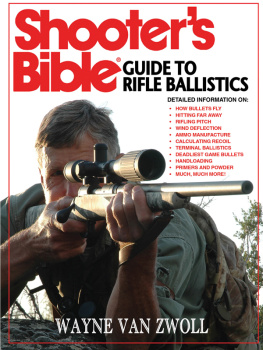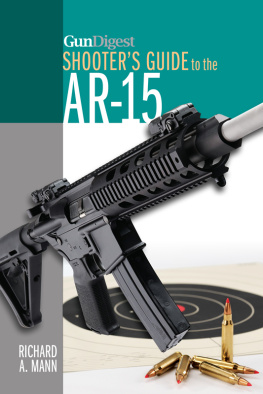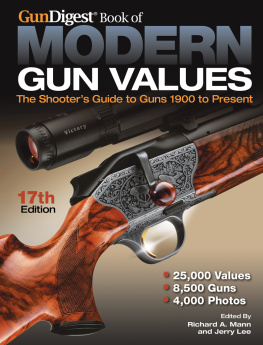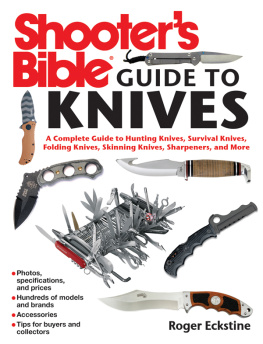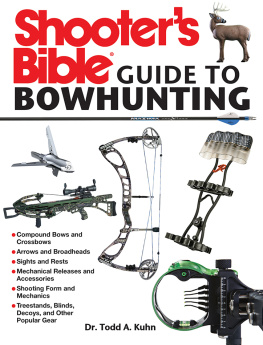Copyright 2014 by Stan Skinner
Photographs copyright 2014 by Stan Skinner unless otherwise noted
All Rights Reserved. No part of this book may be reproduced in any manner without the express written consent of the publisher, except in the case of brief excerpts in critical reviews or articles. All inquiries should be addressed to Skyhorse Publishing, 307 West 36th Street, 11th Floor, New York, NY 10018.
Skyhorse Publishing books may be purchased in bulk at special discounts for sales promotion, corporate gifts, fund-raising, or educational purposes. Special editions can also be created to specifications. For details, contact the Special Sales Department, Skyhorse Publishing, 307 West 36th Street, 11th Floor, New York, NY 10018 or .
Skyhorse and Skyhorse Publishing are registered trademarks of Skyhorse Publishing, Inc., a Delaware corporation.
www.skyhorsepublishing.com
10 9 8 7 6 5 4 3 2 1
Library of Congress Cataloging-in-Publication Data is available on file.
Cover design by Owen Corrigan
Cover photographs provided by Stan Skinner
ISBN: 978-1-62636-014-3
E-book ISBN: 978-1-62873-538-3
Printed in China
DISCLAIMER
Check your state and local laws before carrying a handgun, concealed or otherwise. Laws vary widely from state to state. Some states allow concealed carry without a permit, some require a permit, and some states do not allow concealed handgun carry at all. All states put restrictions on where and how handguns can be carried legally. In addition, several states outlaw particular modes of concealed carry. Your local law enforcement department or district attorneys office should know the details.
This book is not designed to take the place of a qualified and competent instructor; rather, it is a resource designed to supplement quality training.
CONTENTS
A Note from the Author
T he premise of this book is that most of us will never own, have the opportunity to shoot, or even handle the guns youll find in these pages. Some are outrageously expensive, some are so rare that its unlikely that wed ever physically see one or hold it in our hands. Others are so heavily regulated that few of us would subject ourselves to the tedious and onerous process of (legally) acquiring one. Most such guns would fall into more than one of these categories, which makes the problem even worse.
Let me make it clear that these obstacles apply to me as much as to anyone else. I do have a few nice toys of my own, but most of the guns in these pages are as far beyond my reach as yours.
This means I had to attend numerous trade shows and conventions to obtain interviews and photographs as well as to arrange consignment of firearms. I also visited various collectors and historians around the country to actually see, handle, and shoot some of the fascinating guns Ive written about here.
Inevitably, I had to pick and choose among a seemingly endless list of guns that deserved mention. Mostly, I chose guns that interested me personally.
Almost without exception, there are many fascinating anecdotes and other tidbits to be told about these guns and/or categories of guns. I couldnt use them all, but I dont think youll be disappointed with the choices I made.
Also, I would like to acknowledge those without whom I could not have written this book. Their encouragement, technical expertise, and able assistance were invaluable.
One in particular deserves special mention: Bill Ball has been a close friend since junior high school. Somehow, as we became adults, entered military service (Air Force for him, Army for me), married, and lived separate lives, we remained close friends and are still close to this day. We both are dyed-in-the-wool gun nuts who have hunted on several continents together and separately. We both are established authors, and I have benefited greatly from his expertise as I researched and wrote this book.
Many other friends and colleagues made valuable contributions to my research in ways too numerous to mention here. Nevertheless, each played a significant role in completing this project.
Alphabetically, these contributors are:
Bob Baker, president of Freedom Arms; Angela Barrett, director of marketing of Barrett Firearms; John Buhay, vice president, US Armament Corp; Laura Burgess, president Laura Burgess Marketing; Eric Burgess, vice president, Laura Burgess Marketing; George Caswell, owner Champlin Arms; Neil Davies, marketing director, Hornady; Everett Deger, marketing communications manager, Hornady; Alex Diehl, COO, Krieghoff Intl; Keith Duntze, McMillan Group Intl; Laura Evans, marketing coordinator, Crosman Corp.; Eric Graetz, founder, Lakeside Machine, LLC; Scott Grange, director of public relations, Browning Arms; Gary Giudice, owner Blue Heron Communications; Tyler Hartung, dyed-in-the-wool gun nut; Ed Hope, MG Shooters, LLC (Big Sandy); Garry James, author and firearms historian; J. D. Jones, author, cartridge designer and owner of SSK Industries; Ken Jorgensen, director of marketing, Sturm, Ruger; Dieter Krieghoff, president, Krieghoff Intl; Lon Laufman, owner RKL, Inc; Dave Mattausch (and entire family), master guides for Coues deer and desert bighorn sheep; Kelly McMillan, former owner, McMillan Group International; Jason Morton, marketing director, CZ-USA; Scott O'Brien, Steyr Arms/MerkelUSA; Randell Pence, senior sales executive, Sturm Ruger; Peter Pi, Sr., president, CorBon/Glaser; Paul Pluff, director of marketing services, Smith & Wesson; Dean Rumbaugh, company historian, Weatherby, Inc.; Mike Schwiebert, director of marketing, Weatherby Inc.; Mike Shovel, national sales manager, CorBon/Glaser; Blackie Sleewa, gun nut extraordinaire; Mike Strong, Pima Technologies; Kenton Tucker, MG Shooters, LLC (Big Sandy); Dwight Van Brunt, author; Mike Venturino, author and collector; Yvonne Venturino, firearms photographer.
Researching and writing Shooter's Bible Guide to Extreme Iron has been rewarding, but tedious, time-consuming, and seemingly never-ending. Still I am glad I had the opportunity to write this book, and I hope youll enjoy reading it.
Stan Skinner
I. Express Rifles
T he rise of the classic express rifle is inextricably linked to the glory days of the British Empire when Queen Victorias dominant military machine expanded the British Raj until one could truly say, The sun never sets on the British Empire. As British adventurers penetrated to the darkest corners of Queen Vickies Empire, they found a need for a powerful firearm capable of dispatching various large and dangerous beasts that inhabited these wild and remote places.
Black Powder Behemoths
Before the middle of the nineteenth century, the answer was found in muzzleloading black powder behemoths designed to fire lead balls that weighed as much as a quarter of a pound. A rifle firing a projectile of this size was known as a four bore . This naming system was identical to modern shotgun gauges. Just as a 12-gauge shotgun has a bore diameter able to hold a spherical lead ball weighing one-twelfth of a pound, a four bore gun could fire a spherical lead ball that weighed a full quarter-pound. Conical bullets were also used with great effect in these and smaller bore rifles.
Very few two-bore rifles were made, and they that were invariably single-shots. The smaller 8-bore generated considerably less recoil than the 4-bore, yet still generated adequate power for dangerous game. Smaller 10- and 12-bore rifles were mainly for medium to small game, but were marginal against the largest game.

